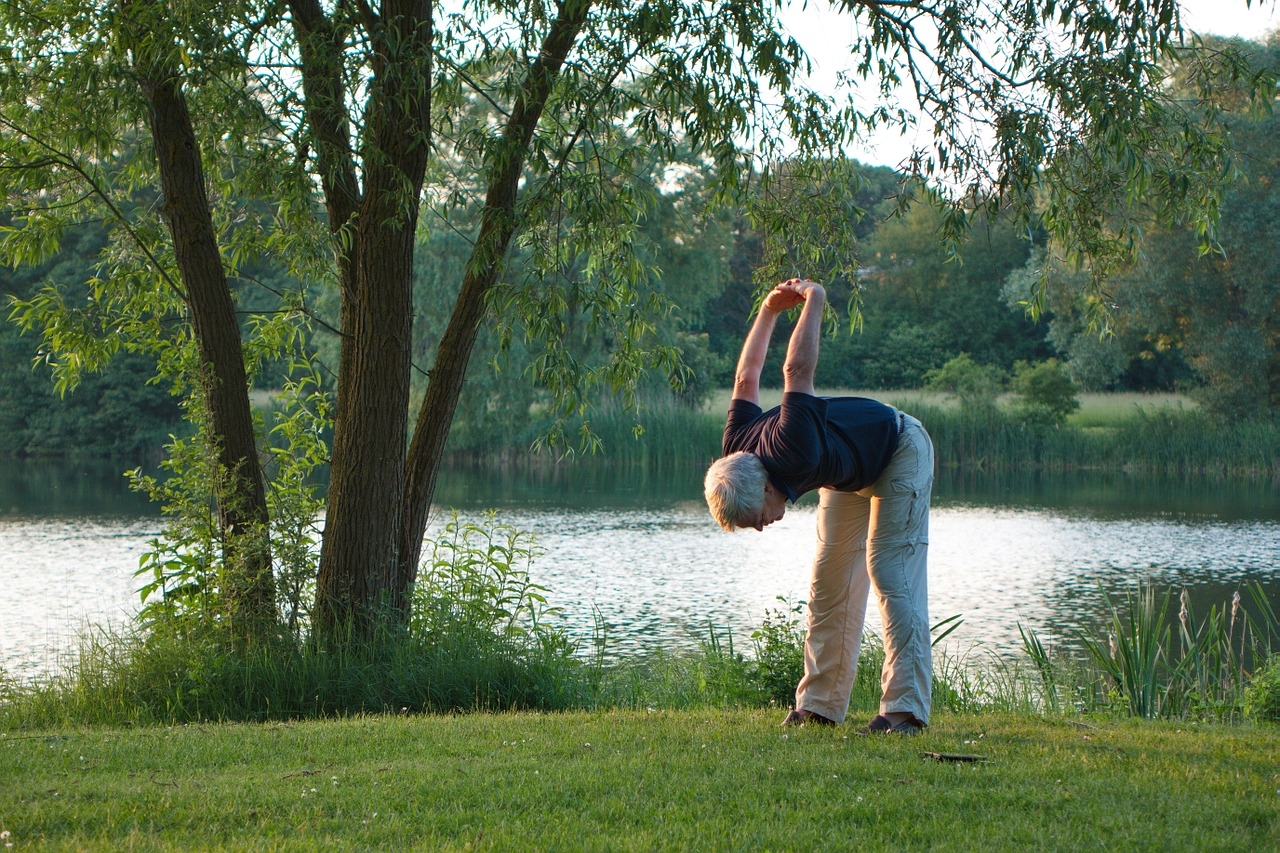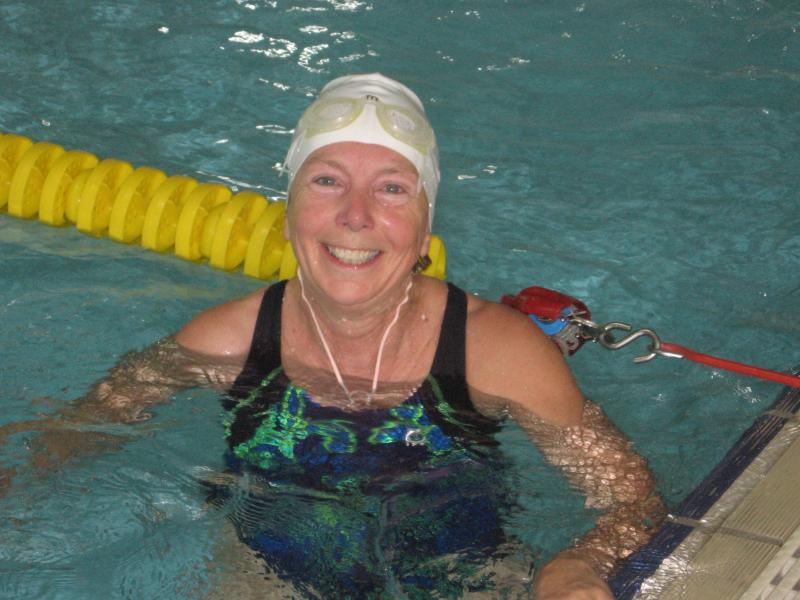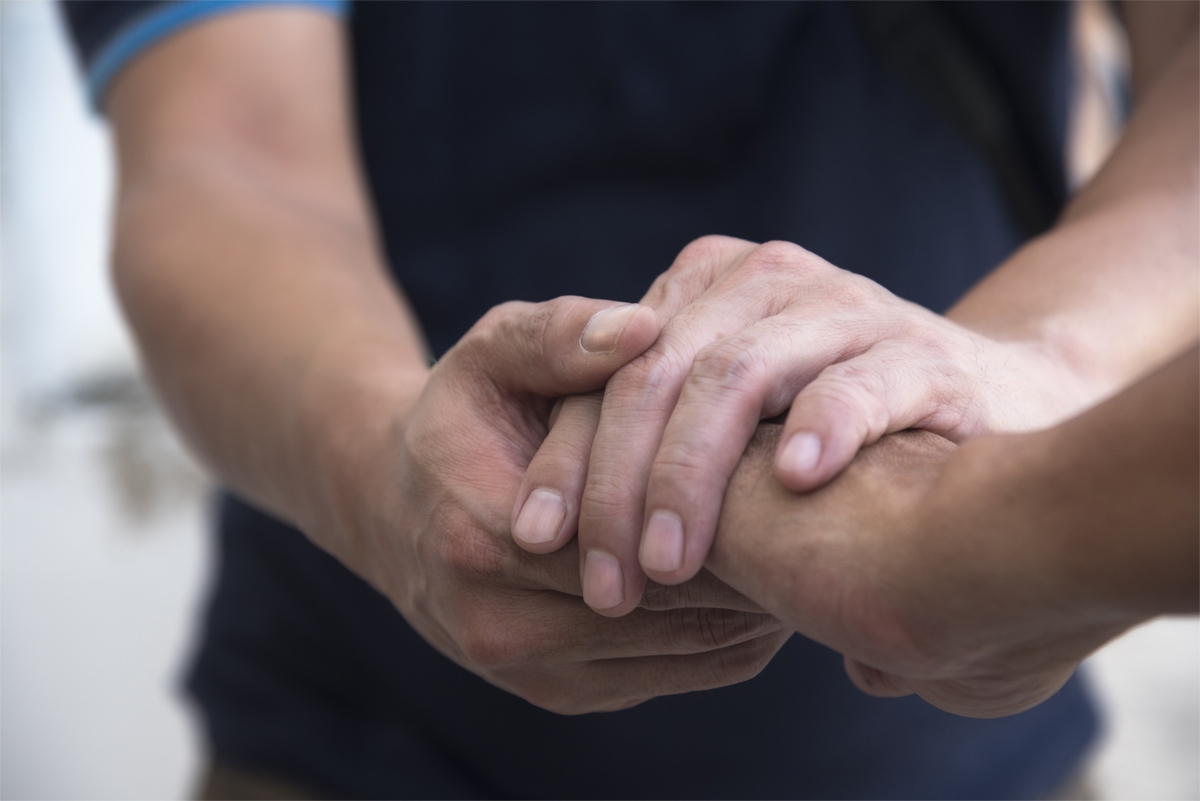
The prescription: Reflections on the catapulting costs in Ontario healthcare
‘Bed blockers’, ‘hallway medicine’, and ‘wait times’ are three topics which can ignite the conversation in almost any social gathering in Ontario today. If one of those does not do it, phrases such as ‘long-term care bed shortages’, ‘elder abuse’ or ‘cuts in healthcare’ is guaranteed to fire things up. But the path to effective future solutions to such problems as these, in the face of escalating costs in Ontario healthcare, often seem as foggy as the future of our planet experiencing global warming.
The following first person story might, however, provide a prescription to remedy what ails us.
‘I had finally arrived as they say. . . Retired, financially comfortable, and by all outside appearances, I was living the life of Riley! On the inside, however, this 72-year-old, wrinkled, classic gal was in need of restoration.
I had a round or two with health issues and the scales, which had not left me in the winner’s corner. Watching others before me coast to the inevitable end of the run, pushing a walker, and wearing shirts with the slogan, ‘My social calendar, consists of dates with doctors’, threw me into panic mode about my last few laps. Research, reflection and action were required. Of this I was sure.
I decided to take the proverbial bull by the horns, push back from the table more often and join a fitness club within walking distance of my home. It was a series of decisions my doctors had recommended to me far more times than I care to admit. I just did not get it previously, I guess, I simply failed to follow doctor’s orders for many years.
One morning after a few months of daily attendance an attractive, slim, pony-tailed club member made eye contact and greeted me by name. I did not recognize this svelte 30-something lady immediately but within minutes the voice twigged my memory and I identified her as my family doctor, Dr. Kristy Staples.
She was totally out of context, dressed in comfortable gym clothes and much slimmer than I remembered. I had not seen her in forever, because I had lost close to 40 pounds myself, was exercising almost every day, and had not needed to go see her for anything in a very long time. When I told her what I had been doing and that I was now off all prescription medications and felt healthier than ever, she responded,
“Ninety per cent of my patients would not need to see me if they did exactly what you are doing.”’
Now I knew Dr. Staples was a bright lady and a capable physician, but I had no idea her prescription of weight loss and exercise could have such an impact in managing, eliminating or retarding the progress of some of my maladies.
There is, I discovered, a global movement among health care professionals across the globe called Exercise is Medicine Rx (EIM).
American Dr. Robert E. Salllis, MD, FACSM, founding task force chair of the Exercise is Medicine Rx initiative, asked his medical colleagues whether they would write a prescription for one free medicine which would prevent dozens of diseases from diabetes and hypertension to obesity, if it existed? ‘Certainly’, was the response.
That kick started a health care movement in 2007, succinctly described on the Exercise is Medicine Rx Canada website. It is based on abundant evidence of scientific research that physical activity and exercise reduces the risk of chronic disease significantly and that it “should be incorporated as a key health indicator and standard of medical care.”
The vision of this organization is the belief that physical activity is an integral part of prevention and treatment of chronic disease in the Canada Health Care system. It's mission statement is: ‘To provide national leadership in promoting physical activity as a chronic disease prevention and management strategy to improve the health of Canadians.’ It promotes the idea that health care professionals need to assess, prescribe and counsel patients in physical activity as a regular first effort to improve health problems.
According to a website entitled ‘Exercise is Medicine: A Global Health Initiative’, some of the most elite universities in the world including Harvard and Yale continually educate students about the value of exercise for themselves and their patients so that, “exercise prescriptions will become the standard in high quality clinical care”.
An article in Harvard Health, in July 2014, Harvard Medical School Professor Dr. Min Lee states: “I do think of it as medicine and even better it is a medicine that is free and has very few side effects. The many benefits of physical activity are continually backed by mounting research.”
An October 2013 British Medical Journal (BMJ) study found that exercise is often as effective as drugs at preventing death from the most common killer diseases: cardiovascular disease and diabetes. In addition, a June 2019 report in Harvard Health found that older adults with broader social interactions outside their homes have higher physical activity, greater positive moods and fewer negative feelings.
Dr. Mike Evans of Toronto also presents credible research to support the goal of EIM initiatives in a video entitled ‘23 ½ hours’ which favourably compares results achieved by diet and exercise to physician intervention in heart disease, high blood pressure and joint replacements.
An informative workshop offered at The Arthritis Society in Ottawa, on September 4, 2019 drove home the incredible benefit of weight management and regular exercise in dealing with obesity, cancer, high blood pressure, osteoporosis, depression, heart disease, dementia and diabetes. Exercise it seems with osteoarthritis, reduces the need for medications, reduces pain, reduces stress and improves sleep, mood, self esteem, energy, appearance, functioning, and can eliminate or retard the need for joint replacements.
A extension of this concept is reflected in the ‘On the EMI Partner: Park RxAmerica- Dr. Robert Zarr-2019’ site, where it states that there have been over 500 scientific studies within the previous year alone, which showed a correlation between active time in nature and improved physical and mental health outcomes. Dr. Zarr founded Park RxAmerica to educate professionals about the benefits of prescribing nature with place, activity, dose and frequency, encouraging active time in nature to redirect patients trajectory of illness into a path of health.
Even the ancient Greek physician Hippocrates, the founder of Western Medicine, advocated exercise as a terrific medicine when he said, ‘Walking is the best medicine.’
Currently, all levels of government in Ottawa, Ontario and Canada are contributing funds to the massive health care costs of Canadians. Politicians of every political stripe are universally concerned about the escalating costs of health care and the deficiencies in the provision of it for everyone. Every leader seems to want to improve the care which is available and stretch the budget so better services can be offered with the money available. The problem is always how to afford what everyone needs and wants when there is a limit to the amount of money collected from the tax-paying populace, no magic money pot to access, and no baskets with loaves and fishes to satisfy the hunger of the ever increasing crowds gravitating to the mountain for healthcare.
May I suggest a somewhat radical idea for our leaders to deal with this conundrum?
How about we digest and apply the abundant conclusive research we already have about health? How about we listen to the medical researchers and the health care professionals who are in the front line delivering the services and actually take their learned advice on ways to improve the health of our citizens? How about we think outside of the box, amalgamate some of the budgets and policies, get our brightest and best front line people in the medical field, the educational field and the recreational field to work together in a non partisan way? Let’s ask them to develop strategies and program policies to implement what knowledge we have from our strongest thinkers and players in the game?
Then how about we try it out in one or two communities to see if the proactive preventative solutions they put in place truly do improve the health of citizens and simultaneously reduce health care costs in those communities? Perhaps our best universities could supply the brain power and expertise we need to assess such trials offering the services of the cream of the crop academics and their students free of charge or for minimal compensation.
For openers I suggest we look at ways to improve exercise opportunities for all school children, kindergarten through grade 12.
What if we sold the idea in our culture through our schools, that daily exercise is as salient to a positive life routine as eating, sleeping and bathing? What if we dialed back the ‘stranger danger’ and ‘ helicopter parenting’ meters and encouraged our children to walk to and from school if at all possible and play outside after school until dinner time or dark? What if we got our curriculum planners for the school system to develop instructional units for every grade focussing on the health value of physical exercise, sound nutrition and daily activity? What if it was mandatory for every student to participate every school day in a ‘movement’ class or activity? What if we opened our school buildings at 7 a.m., closed them at 6 p.m. and offered ‘movement’ activities of all kinds, during this added time at schools? What if this added time replaced before and after school daycare for students and was funded by the money parents are now paying to daycare providers? What if we hired top notch recreation graduates from our community colleges, dance teachers or fitness instructors to run these ‘movement’ options at salaries much less than must be paid to an educator with Ontario teacher qualifications? What if students in these fields at university and college did practicums at schools to improve student/adult ratios? What if we also used active senior volunteers to provide some ‘movement’ activities? What if competent older high school students ran some ‘movement’ activities as part of their volunteer work? What if every teacher was required to offer and participate in some ‘movement’ activity with students? What if parents were encouraged to participate in activities before or after work along with their children? What if we all accepted that we live in a climate which requires appropriate clothing for any one of dry, hot, warm, rainy, damp, cool, snowy, cold, icy, windy, and stormy weather and that outside active activities are expected, planned and managed by all no matter the weather almost all the time?
At the other end of life I wonder what would happen to the demand on health care services and its incredible spiraling cost if we worked together on providing greater access to exercise opportunities for those over 55, especially those on limited income and those without a personal vehicle.

What if we made public transportation, which we are already paying for I might add, free for seniors after the rush hour in the morning and before rush hour in the afternoon when buses appear almost empty much of the time during those periods? What if we opened up all our community centres and recreation centres to seniors, which we are also already paying for, and packed every available room all day, every day, with ‘movement’ programs that are totally free of charge? What if we hired a community college graduate for each recreational complex, to organize all kinds of activity programs for seniors from zumba to yoga, to modern dance classes and then do outreach to every senior in their catchment area? What if we ensured our buses passed by their door regularly or fund pick up buses or vans for senior programs? Maybe a volunteer service for senior pickup could be established to get them out to activity programs? Maybe car pools could be arranged in certain areas to transport seniors to ‘movement’ activities? What if we had nutrition and food preparation information and workshops there? What if we had a whack of chairs, tables, comfortable chesterfields and lounge chairs for 30-40 seniors to sit and chat, play cards, read a newspaper, enjoy a television program or news station, meet up with others, drink a free coffee or tea, and maybe just drop around during the day to chat with whoever might be there? What if our senior population could actually go out every day, meet other folk, chat, take a few ‘movement’ classes and get a ride, all for free? And for wealthier seniors with financial resources and their own transportation how about incentivizing them to get more active with a tax credit for enrollment and participation in any physical exercise program that might qualify?
I saw this kind of thing working in Spring Hill, Florida in the winter of 2018 at a local recreation centre. For any senior with a doctor’s letter stating that exercise would assist in managing a health issue, membership in the YMCA/YWCA recreation centre and all programs available, seven days a week from early morning to late at night, were FREE.
As a Canadian visitor I paid $30 for two months for the same privilege. I went every day doing aquafit, swimming, zumba, line dancing, and modern dance. I attended a valentine’s dance/supper for $5. The centre had a full gym with free trainers for three sessions, guitar classes, art lessons, daycare for grandmothers with grandkids, a swimming pool, and a big lounge area at the front. This was a regular YMCA/YWCA community centre in a nondescript ordinary part of a the small urban community and most of the people who went there were on limited incomes. The place was jammed pack every single day. Every room was running a program, virtually all the time. The facility was simple and old but going full tilt!
What an example for us to look at to address our health care costs for seniors. And it supports the research, validates what our health care professionals are trying to tell us, and it shows us it can be done!
Imagine the reduction in the health care system costs that the push back on chronic illnesses affecting older people through exercise might impact? Imagine the reduction in costs associated with drastically reducing the need for visits to the family doctor, the reduction in wait times to see a specialist, the reduction in the costs of drugs, the reduction in the wait for a hospital procedure and bed? Imagine the reduction in the loneliness, isolation and depression that according to the research, characterizes so many in this group, the decreased need for visits to the doctor for mental health issues and resulting reduction in pharmacological costs? Imagine the reduced costs associated with less need for long-term care beds?
These starter ideas may sound idealistic or impossible or unaffordable. But if Dr. Staples is anywhere close to right with the numbers, if we gave it a shot, we could potentially decrease the need for family doctors by about 90 per cent and all the resulting costs flowing out of those visits. The money saved could be redirected into funding preventative strategies such as increasing activity in our citizens.
The Exercise is Medicine Canada Organization tells healthcare professionals that the evidence is clear. The exercise vital sign is the most important vital sign you need to monitor with the majority of patients seen in primary care today.
Our leaders need to turn on the lights. The remedy what ails our Ontario healthcare system is available. It is time to write and fund the prescription.










